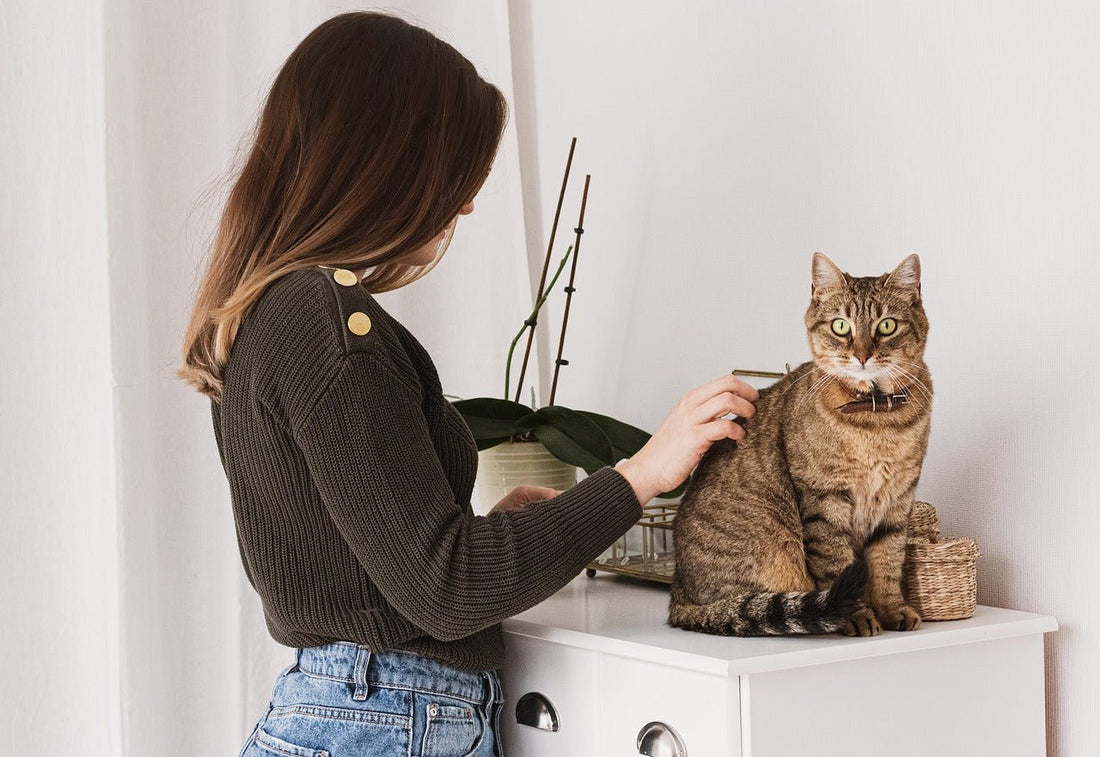

Cat Brush Timing
This practical manual shows how often to brush a cat for hair removal.

Can I brush my cat every day? Yes, you can groom the cat 7 days a week. Some owners adore brushing their cats and love to do it more frequently which is perfectly fine with the right brush!
Brushing your cat can be a delightful bonding experience if done correctly. Here is a step-by-step guide for cat brushing.

Choosing the right tools is crucial for effective grooming. Hair size will determine the best cat brush type.
However, a versatile tool, like the multipurpose cat brush, will suit all fur types. It will ensure thorough grooming sessions.
Different cat breeds have different fur types. Each of those requires specific grooming techniques. Short-haired cats do great with once a week brush. But long-haired breeds need daily grooming to prevent mats and tangles.
Regular brushing reduces shedding by removing loose fur. This prevents the fur from spreading around your home. It also minimizes the risk of hairballs, which are harmful and can cause discomfort and health issues for your cat. An undercoat deshedding tool can be used by professionals in grooming visits.
However, handling daily cat shedding is a different ballgame. You must provide balanced diets with fatty acids and wet cat foods for them to eat. Good hydration and stress reduction also help a lot. Lastly, bathe and groom the kitty only when they are dirty. Regular brushing will also remove cat dandruff or, at least, keep it at bay.
Special Grooming Tips for Shedding Seasons
Cats shed more during the —
During these seasons, increase the frequency of brushing to keep their coat manageable and mat-free. Frequent grooming during shedding seasons helps maintain a healthy coat and reduces fur around your home. Many owners prefer brushing in summer frequently.
If your cat is anxious about brushing, create a calm environment. I apply many techniques to relax the kitty.
Seeking professional help might be necessary for cats with severe matting. It also helps those who are particularly difficult to groom. Professional groomers have the tools and expertise to handle even the most challenging cat grooming.
For instance, Maine Coon, Ragdoll, Himalayan, Birman, Siberian, and Turkish Van cat breeds can benefit from expert grooming visits.
Brushing for Different Cat Breeds
Different breeds have different grooming needs. For instance, Persian cats need more grooming than short-haired breeds like the Siamese. Understanding the specific needs of your cat’s breed will help you provide the best care. Here’s a youtube video of a cat hair brush tutorial to help you.
Maintaining a Healthy Coat
Avoid common mistakes such as brushing too hard as it can irritate your cat's skin. Always be gentle and patient, and use the appropriate tools for your cat's fur type. For instance, a steam brush for cats is making waves but be aware of the risks of these.
Good Diet for Better Cat Fur
A balanced diet plays a crucial role in maintaining a healthy coat. Foods rich in omega-3 and omega-6 fatty acids can improve the quality of your cat’s fur and skin, making grooming easier and more effective.
|
Nutrients |
Sources |
Benefits for Cat Fur |
| Proteins |
High-quality cat food, chicken, fish, eggs. |
Promotes healthy fur growth and repairs damaged hair. |
| Omega-3 Fatty Acids |
Fish oil, salmon, sardines. |
Reduces inflammation, adds shine, and promotes softness. |
| Omega-6 Fatty Acids |
Poultry fat, safflower oil, sunflower oil |
Maintains fur texture and promotes healthy skin. |
| Vitamins A and E |
Liver, fish, eggs, leafy greens |
Supports skin health and enhances coat quality. |
| Biotin |
Liver, kidneys, egg yolk |
Strengthens fur and prevents dryness and brittleness. |
| Fiber |
Vegetables, whole grains, pumpkin |
Helps in proper digestion and nutrient absorption. |
| Water |
Fresh, clean water |
Keeps skin hydrated and prevents dry, brittle fur. |
Regular grooming helps you keep an eye on your cat’s skin health. Look out for signs of issues like dryness, redness, or parasites. Early detection of skin problems can prevent more serious health issues down the line. Here we’ll explain different types of cat skins below —
Alongside aging, frequent cat grooming helps manage their fur. Older cats might not groom themselves as effectively, so regular brushing can help maintain their coat and overall health. To make brushing enjoyable for your cat:
Consistency is key. So aim to brush your cat regularly to build a routine.
Conclusion:
So how often should I brush my cat hair? You can brush the kitty daily or every other day. It reduces shedding and prevents mats while promoting a healthy coat and skin. It also strengthens the bond between you and your feline friend.
Remember, the right tools and techniques make all the difference. Get a quality brush like the Bailey Brush to enhance your cat’s grooming routine. Grooming ensures their comfort and well-being, creating a stronger bond and a healthier, happier feline friend. Following these cat brush tips will help you make a routine for a well-groomed cat. Happy grooming!
No comments
0 comments